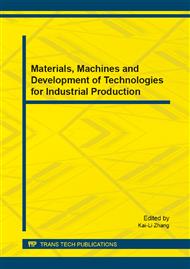[1]
Asundi A, Choi AYN. Fibre Metal Laminates: An advanced Material for Future Aircraft. Journal of Materials Processing Technology. 1997, 63: 384-389.
DOI: 10.1016/s0924-0136(96)02652-0
Google Scholar
[2]
Vlot A, Gunnink JW. Fiber Metal Laminates, Kluwer Academic Publishers, Dordrecht, The Nethaerlands, (2001).
Google Scholar
[3]
Zhao Jiaxiang. Carbon fiber application in t he civil aviation. Hi-tech Fiber and Application, 2003, 28 (3): 124.
Google Scholar
[4]
Randy L C. Boeing/ NASA composite components flight service evaluation. NASA Contract Report 181898, (1989).
Google Scholar
[5]
Cees V. H, Peter K. Arall and Glare Fml's: Three Decades of Bridging the Gap between Theory and Operational Practice. ICAF 2009, 2009: 601-615.
DOI: 10.1007/978-90-481-2746-7_35
Google Scholar
[6]
Woerden HJM, Sinke J, Hooijmeijer PA. Maintenance of GLARE structures and GLARE as riveted or bonded repair material. Applied Composite Material 2003; 10: 307–29.
Google Scholar
[7]
Vogelesang LB, Vlot A. Development of fibre metal laminates for advanced aerospace structures. J Material Processing Technology, 2000; 103: 1–5.
DOI: 10.1016/s0924-0136(00)00411-8
Google Scholar
[8]
J.J. Homan, Fatigue initiation in fibre metal laminates. International Journal of Fatigue, 2006, 28: 366–374.
DOI: 10.1016/j.ijfatigue.2005.07.030
Google Scholar
[9]
Marissen R. Fatigue crack growth in ARALL, a hybrid aluminium–aramid composite material. Crack growth mechanisms and quantitative predictions of the crack growth rates, Report LR-574, Delft University of Technology, Faculty of Aerospace Engineering; (1988).
DOI: 10.2514/3.45553
Google Scholar
[10]
Alderliesten RC. Development of an empirical fatigue crack growth prediction model for the Fibre Metal Laminate Glare. Master Thesis, Delft University of Technology, Faculty of Aerospace Engineering; 14 December (1999).
Google Scholar
[11]
Vlot A, Kroon E, LaRocca G. Impact response of fiber metal laminates. Key Engineering Material, 1998, 141–143: 235–76.
DOI: 10.4028/www.scientific.net/kem.141-143.235
Google Scholar
[12]
Michelle S. Hoo F, Chun L, Duane M. Revilock Jr. Dale A. Hopkins Ballistic impact of GLAREe fiber–metal laminates. Composite Structures, 2003, 61: 73–88.
DOI: 10.1016/j.compstruct.2009.08.023
Google Scholar


